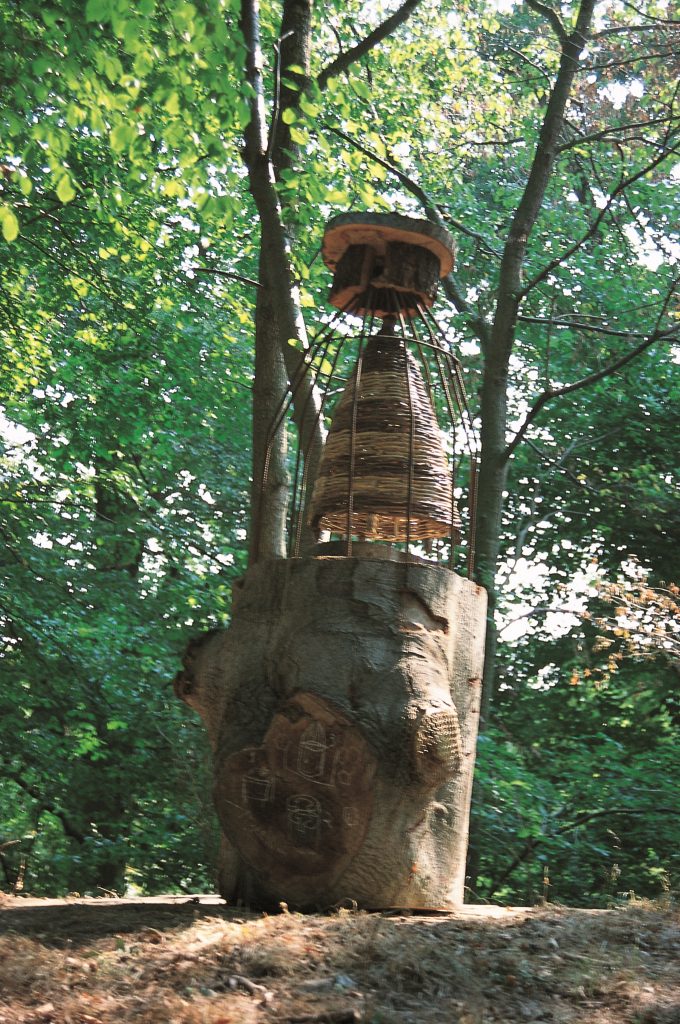(removed after the 1999 hurricane)
Just like Danish Jan Norman (Beehive, 1993), Greek Marios Spiliopoulos's contribution to TICKON was devoted to bees.
But for Spiliopoulos, it was not after a sudden inspiration that he created the 'Village of Bees'. The small honey collectors who are characteristic of the artist's home region of Polygyros in Chalcidici and who there enjoy the status of sacred (and in any case useful) animals, because it is from this area that by far the largest part of the famous Greek honey originates.
With his childhood country in mind, Spiliopoulos began in 1986 to explore the old local rituals. In 1990, it became the work Biernes Sakramente.
In TICKON, the work was built as an urban village, shaped like a human village with twelve houses/beehives. The 'Church' was the largest beehive placed on the rope, a circular piazza formed by twelve poles, one for each month. In addition, four modern beehives oriented towards the corners of the world and finally seven other beehives on the outskirts of the 'village', all different and with symbolic content.
Like many other works, Biernes Landsby did not survive the great hurricane in December 1999 and had to be removed completely.
Marios Spiliopoulos, born 1957 in Greece. Has studied at the Athens School of Fine Art, where he also became a teacher himself. Exhibited for the first time in 1984 on the occasion of the international congress of art critics in Delphi and has since shown works in most of Europe as well as Egypt.

Artist: Marios Spiliopoulos / See more of Spiliopoulos' work here.
Year: 1995
Marios Spiliopoulos, born 1957 in Greece. Has studied at the Athens School of Fine Art, where he also became a teacher himself. Exhibited for the first time in 1984 on the occasion of the international congress of art critics in Delphi and has since shown works in most of Europe as well as Egypt.
